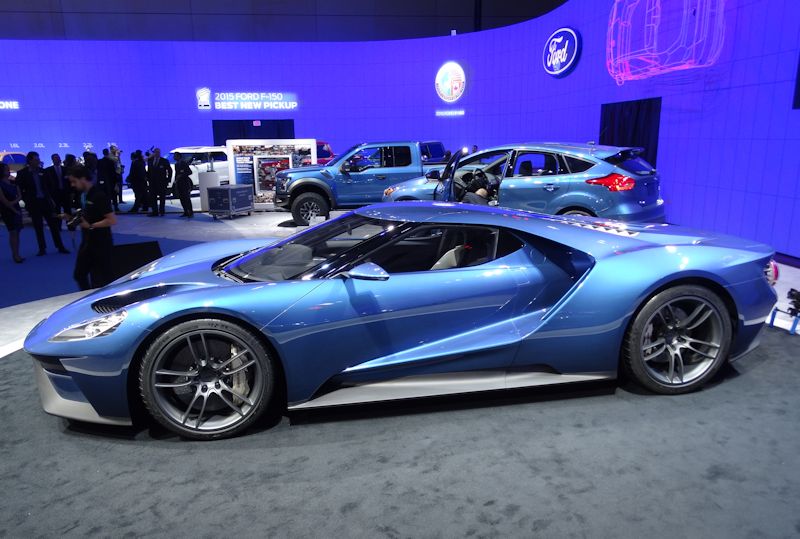 |
| Photo Credit: Chris Nagy |
Technology wastes no time in ringing-in a new year. This week, the CES (Consumer Electronic Show) 2016 edition will provide a dazzling showcase pitching how this recently-arrived year, as well as others following, could be impacted by new ideas. Once a major exhibition for computer companies and home electronics trends, auto companies have rapidly assumed the figurative center stage at CES as a changing driving experience is quickly becoming apparent. Appearing almost as important as Detroit's North American International Auto Show in some aspects, the beginning of the year has Ford Motor Company devoting considerable resources into the 2016 CES.
Set to be part of their showcase starting with Tuesday January 5th press conference ahead of the CES' opening, Ford has presented an impressive official show vehicle for the event. The reincarnated supercar that served as an auto show crown jewel in 2015, the 2017 Ford GT represents 2016's new and advanced technologies.
Powered by a 600-plus horsepower, twin-turbocharged EcoBoost V-6 engine, the 2016 CES official show vehicle is the inspiration of a Ford Motor Company excited to show how American performance will look in 2017 and beyond. The 2017 Ford GT's cutting-edge carbon fiber construction (being made a production reality thanks to Canada's Multimatic) includes the integration of active aerodynamics. Another weight-saving feature is found with the windshield of the Ford GT made possible through the same technology used with smartphones and tablets. The Gorilla Glass hybrid windshield was developed in cooperation with Corning is said to be 30 percent lighter than conventional windscreens but is also scratch resistant.
Along with exhibiting the 2016 CES official show vehicle, Ford pledges to show-off technology that expands on the company's current work or blazes new paths.

Comments
Post a Comment